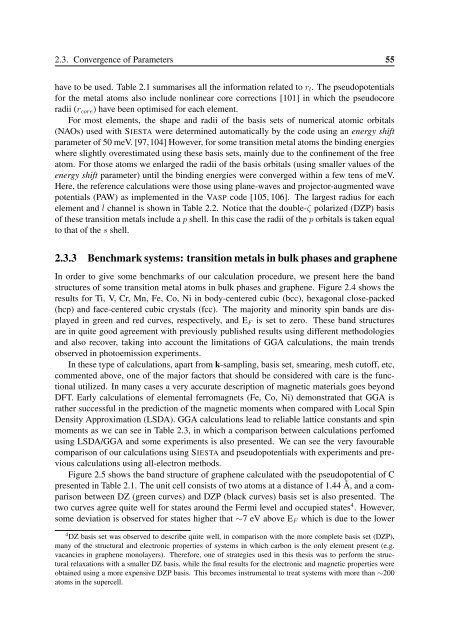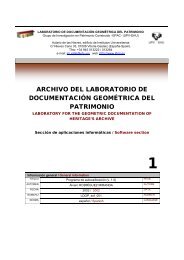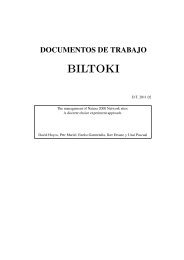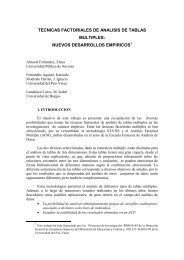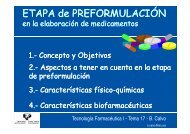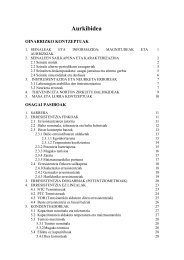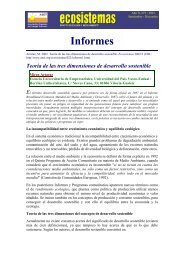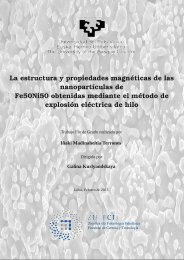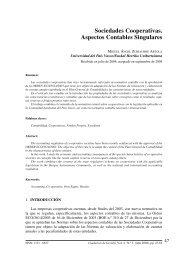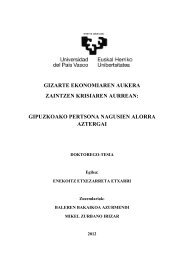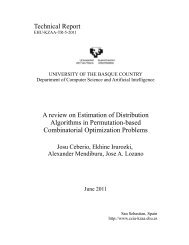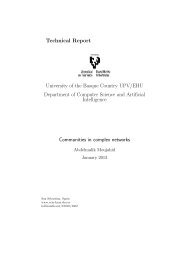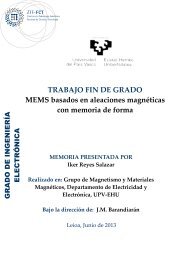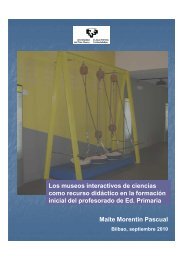Ï - ADDI
Ï - ADDI
Ï - ADDI
- No tags were found...
You also want an ePaper? Increase the reach of your titles
YUMPU automatically turns print PDFs into web optimized ePapers that Google loves.
2.3. Convergence of Parameters 55have to be used. Table 2.1 summarises all the information related to r l . The pseudopotentialsfor the metal atoms also include nonlinear core corrections [101] in which the pseudocoreradii (r core ) have been optimised for each element.For most elements, the shape and radii of the basis sets of numerical atomic orbitals(NAOs) used with SIESTA were determined automatically by the code using an energy shiftparameter of 50 meV. [97,104] However, for some transition metal atoms the binding energieswhere slightly overestimated using these basis sets, mainly due to the confinement of the freeatom. For those atoms we enlarged the radii of the basis orbitals (using smaller values of theenergy shift parameter) until the binding energies were converged within a few tens of meV.Here, the reference calculations were those using plane-waves and projector-augmented wavepotentials (PAW) as implemented in the VASP code [105, 106]. The largest radius for eachelement and l channel is shown in Table 2.2. Notice that the double-ζ polarized (DZP) basisof these transition metals include a p shell. In this case the radii of the p orbitals is taken equalto that of the s shell.2.3.3 Benchmark systems: transition metals in bulk phases and grapheneIn order to give some benchmarks of our calculation procedure, we present here the bandstructures of some transition metal atoms in bulk phases and graphene. Figure 2.4 shows theresults for Ti, V, Cr, Mn, Fe, Co, Ni in body-centered cubic (bcc), hexagonal close-packed(hcp) and face-centered cubic crystals (fcc). The majority and minority spin bands are displayedin green and red curves, respectively, and E F is set to zero. These band structuresare in quite good agreement with previously published results using different methodologiesand also recover, taking into account the limitations of GGA calculations, the main trendsobserved in photoemission experiments.In these type of calculations, apart from k-sampling, basis set, smearing, mesh cutoff, etc,commented above, one of the major factors that should be considered with care is the functionalutilized. In many cases a very accurate description of magnetic materials goes beyondDFT. Early calculations of elemental ferromagnets (Fe, Co, Ni) demonstrated that GGA israther successful in the prediction of the magnetic moments when compared with Local SpinDensity Approximation (LSDA). GGA calculations lead to reliable lattice constants and spinmoments as we can see in Table 2.3, in which a comparison between calculations perfomedusing LSDA/GGA and some experiments is also presented. We can see the very favourablecomparison of our calculations using SIESTA and pseudopotentials with experiments and previouscalculations using all-electron methods.Figure 2.5 shows the band structure of graphene calculated with the pseudopotential of Cpresented in Table 2.1. The unit cell consists of two atoms at a distance of 1.44 Å, and a comparisonbetween DZ (green curves) and DZP (black curves) basis set is also presented. Thetwo curves agree quite well for states around the Fermi level and occupied states 4 . However,some deviation is observed for states higher that ∼7 eV above E F which is due to the lower4 DZ basis set was observed to describe quite well, in comparison with the more complete basis set (DZP),many of the structural and electronic properties of systems in which carbon is the only element present (e.g.vacancies in graphene monolayers). Therefore, one of strategies used in this thesis was to perform the structuralrelaxations with a smaller DZ basis, while the final results for the electronic and magnetic properties wereobtained using a more expensive DZP basis. This becomes instrumental to treat systems with more than ∼200atoms in the supercell.


